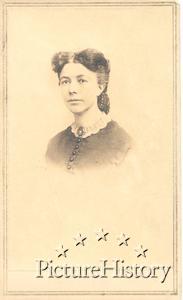Mary
Louise Booth was born at Yaphank in 1831. She was the
daughter of the village miller and school teacher. Mary Booth was a writer,
translator and magazine editor. She began to translate French works at
a young age
and completed about forty in all, including books that were sympathetic
to the Union cause, which won praise from Abraham Lincoln. At the same
time,
Booth wrote her own book, "History of the City of New York" (1859),
which
won great praise and commercial success. Booth fought for women's
rights alongside Susan B. Anthony and served as secretary at the
conventions in Saratoga in 1855 and New York City in 1860. She was also
an abolitionist.
In 1867 Booth was named editor of the Harper Brothers' new magazine,
"Harper's Bazar," a family and fashion magazine. Booth combined the
skills of a shrewd businesswoman, intuitive knowledge of the tastes of
conventional Victorian ladies, and the literary judgment of a writer,
making the "Bazar" a great financial success. Booth built a magazine
that continued more than a century after her death (although its name
was changed to "Bazaar" in 1929).
She
died
on March 5,
1899 and was buried in the family Plot in Cypress Hills Cemetery.
Some of her
translations were: About's King of the Mountains; Cousin'sSecret History
of the French Court, (1859); Pascal's Lettres Provinciales (Provincial
Letters); Gasparin's Uprising of a Great People, (1861), America Before
Europe, (1861); Laboulaye's Paris in America, (1865); Cochin's Results
of Emancipation, (1862), and Results of Slavery, (1862). She also wrote
a comprehensive History of New York, (1861, revised 1880).

